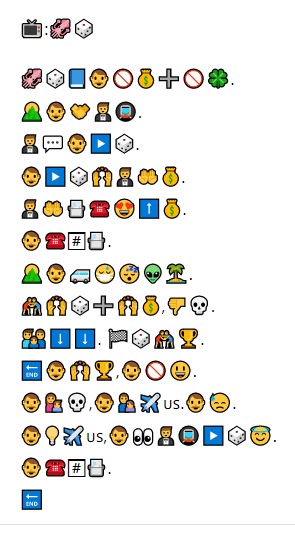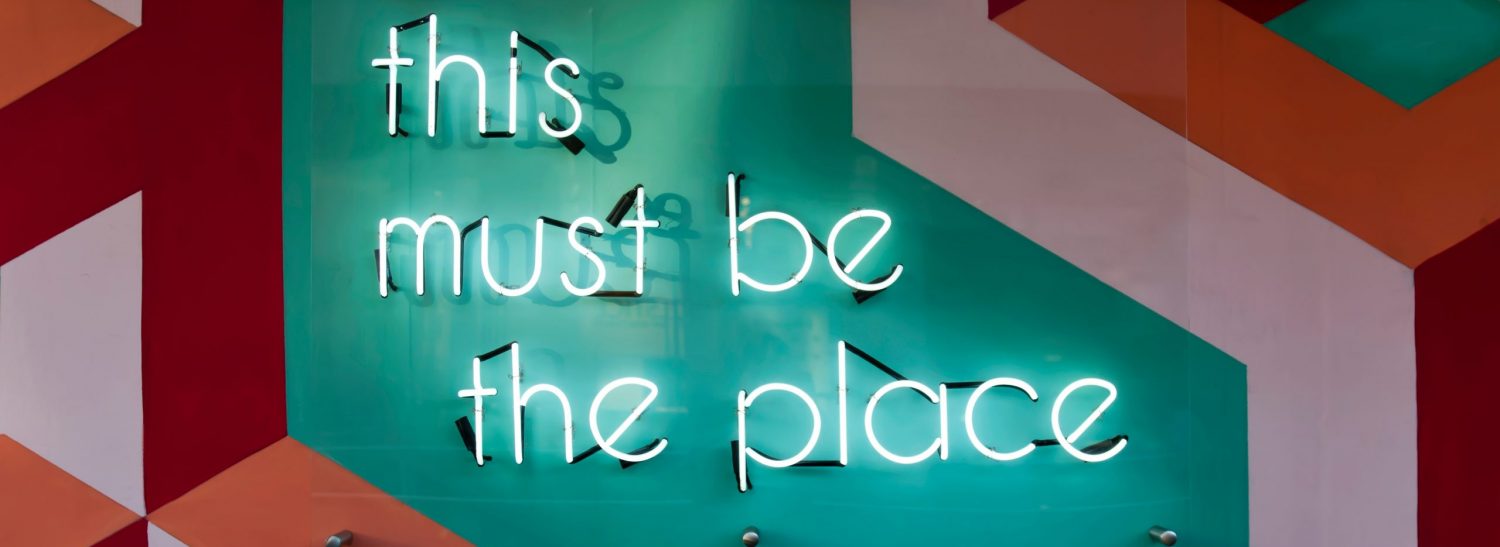
According to Bolter (2001), the power once held in writing alone has been declining and due to the prevalence of digital media in our modern society, images now replace the meaning once held sacred in written words (p.56). This task sought to trial this notion in a sense by asking fellow pupils to interpret familiar images (in the form of emojis) as we would words to describe the plot of a television show or film.
To begin this task, I tried to simplify the plot of the TV show as much as possible by turning only the important parts (beginning, characters, middle and end) into short emoji sentences. I then placed these emoji sentences in a sequential order so that they could be followed from left to right in the fashion of ‘reading’ them similar to words on a page of a book or website. The order of the emojis was important to understanding the plot as Kress (2005) expresses that, “Hearers (and readers to a somewhat lesser extent) depend on the “unfolding”, the revealing of elements one after the other to be able to make sense of the whole.”(p.13)
The emojis themselves represented words rather than syllables which I hadn’t considered using. I started with the title just because that was part of the initial instructions given, but personally this was such a popular show that I think the clues held in these emoji sentences can quickly become quite transparent to the reader.
Some of the challenges I encountered within this task were trying to figure out which symbols best represented the words or phrases about the show I was describing to then translate meaning to a vast audience. Kress (2005) described how words act as interpretable symbols and I believe emojis in this task act in the same way described by Kress (2005) below,
Words are (relatively) empty entities—in a semiotic account they are signifiers to be filled with
meaning rather than signs full of meaning, and the task of the reader is to fill these relatively vacant
entities with her or his meaning. This is the task we call interpretation, namely interpreting what sign
the writer may have intended to make with this signifier. (p.7)
Therefore, I wanted to choose emojis that I saw used often in text messages and from popular social media sites to help translate the meaning to the masses in the most effective fashion. Bolter (2001) explains below that different people may interpret pictures/emojis in different ways, however emojis seem to be present cross-culturally due to the popularity of social media and therefore may lead to a wider shared understanding, “Although the writer and reader may use words to describe and interpret the pictorial message, two readers could explain the same message in different words, and speakers of different languages could share the same system of picture writing.”(p.59)
Another challenge I faced during this task was trying to find symbols (emojis) that accurately reflected the real-life look of certain aspects of the show while still conveying an easy to interpret story. For example, it was difficult to differentiate the characters in my description of the TV show I was writing about as there was a limited amount of male emojis available and I had three separate male characters I wanted to introduce to help explain the plot. The only other male emojis were of those in uniforms other than the standard ‘male’ emoji which I had already used for the main character (which also didn’t represent the cultural background of the character accurately). I therefore had to use the innocent/angel emoji to represent one man and a man in a suit emoji to represent another one of the male secondary characters. I chose the angel to represent the personality characteristic of an innocent/naïve person (who didn’t know what was going to happen) and the suit because the character in the show actually wears a suit and little is known about his personality. Another word I found hard to represent was the word, ‘people’. In the end, I decided to use a family to represent this, hoping for the best (although I initially considered using more than one person emoji side by side as well). Finally, since a van was used in the real show, I wanted to get a van emoji and people wearing balaclavas as well to help visualize the plot more accurately but found these were difficult to come across by searching ‘van emoji’ or ‘balaclava emoji’. So, I settled on a minibus to represent the van and a person wearing a medical mask as a balaclava alternative.
As in some of the previous tasks, another problem I faced during this particular task was that I didn’t know what to do with punctuation and whether or not to include it at all. So, I settled on using the plus sign to mean ‘and’ and some periods and commas to help people to read/interpret everything a bit more clearly. However, for conjunctions like ‘if’, ‘because’ or ‘but’, I really couldn’t think of how to represent these in an emoji form, therefore some confusion may still be present in their absence at points in my plot description. To display the text, I decided to break up each sentence and paste them one under the other to allow for a more simplified reading approach as having all the symbols side-by-side seemed a bit overwhelming to take in.
I hope my final pictorial representations are helpful to allow others to derive meaning from them and therefore unravel the plot of this particular television series.
References
Bolter, J. D. (2001). The breakout of the visual. Writing space: Computers, hypertext, and the
remediation of print (pp. 47-76). Lawrence Erlbaum Associates. doi:10.4324/9781410600110
Kress, G. (2005). Gains and losses: New forms of texts, knowledge, and learning. Computers and
Composition, 22(1), 5-22.
https://doi.org/https://doi-org.ezproxy.library.ubc.ca/10.1016/j.compcom.2004.12.004

Great story, Alexi!
The title was a bit of a giveaway, but even without it, I think I would have known the story. You did a great job summarizing such a complex plot into emojis! I noticed the word ‘us’ instead of an emoji. Was this a glitch you ran into as well? I noticed with some of my numbers they wouldn’t populate as an emoji. Very clever use of the ‘plus’ sign! That was a great idea and something I didn’t think of, but a shorthand I often use in my own writing. I’m glad you mentioned the cultural relevance of emojis. I noticed that on my iPhone you can have more choices between people, but the computer website didn’t offer the same freedom. Great observation!
I really enjoyed your write-up, Alexi!
Hey Trista thanks for your response. The US was the emoji for USA flag from: https://emojikeyboard.io/. However, I agree that it was confusing to me as well as I am normally used to the miniature flags appearing as they do on my Whatsapp and social media keyboards! I did find as well that mobile emojis seemed to have more variety (and as you mentioned more culturally relevant emojis) and I might be more inclined to use these keyboards in the future for a task similar to this for more clarity in conveying ideas and concepts.